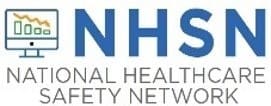NHSN Digital Quality Measures (dQM)


In alignment with CDC’s Data Modernization Initiative, NHSN is developing fully electronic and, where feasible, fully automated measures for patient safety, quality reporting, and public health preparedness and response. NHSN digital quality measures (dQMs) are intended to minimize reporting burden on facilities and providers, improve accuracy, validity, and quality of data collected by NHSN, and increase speed and efficiency of public health surveillance. NHSN dQMs are reported using Healthcare Level Seven International (HL7®) Fast Healthcare Interoperability Resources® (FHIR®) application programming interfaces (APIs).
Advantages of Digital Quality Measures (dQMs)
NHSN FHIR dQMs enable automated, patient-level data reporting, which minimizes delays in data collection and provides access to crucial healthcare data. This new approach to data collection and event determination provides many benefits to facilities, infection preventionists, healthcare epidemiologists, patient safety and quality improvement staff, and other NHSN users. Please see the list of dQMs under development for NHSN.
| With Manual or Semi-Automated Measures | With Digital Quality Measures |
|---|---|
| Data standards are specific to the measure and the organization to which they are reported | Data are represented using nationally recognized standards across the EHR vendors, facilities, and agencies |
| Data are pushed (NHSN waits for the facility to transmit data) | Data can be pulled, making real-time surveillance feasible |
| Data are often aggregated, facility-level risk adjustment is typical | Data are at the patient level, patient-level risk adjustment is possible |
| Measures are pre-determined before transmission | Measures can be adapted after data transmission |